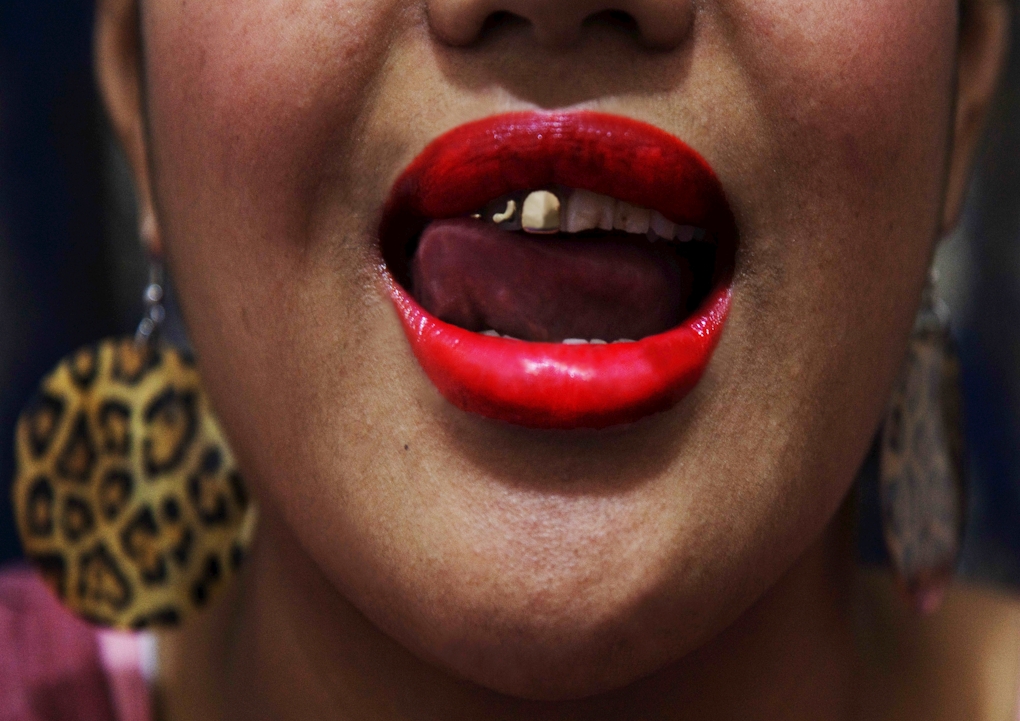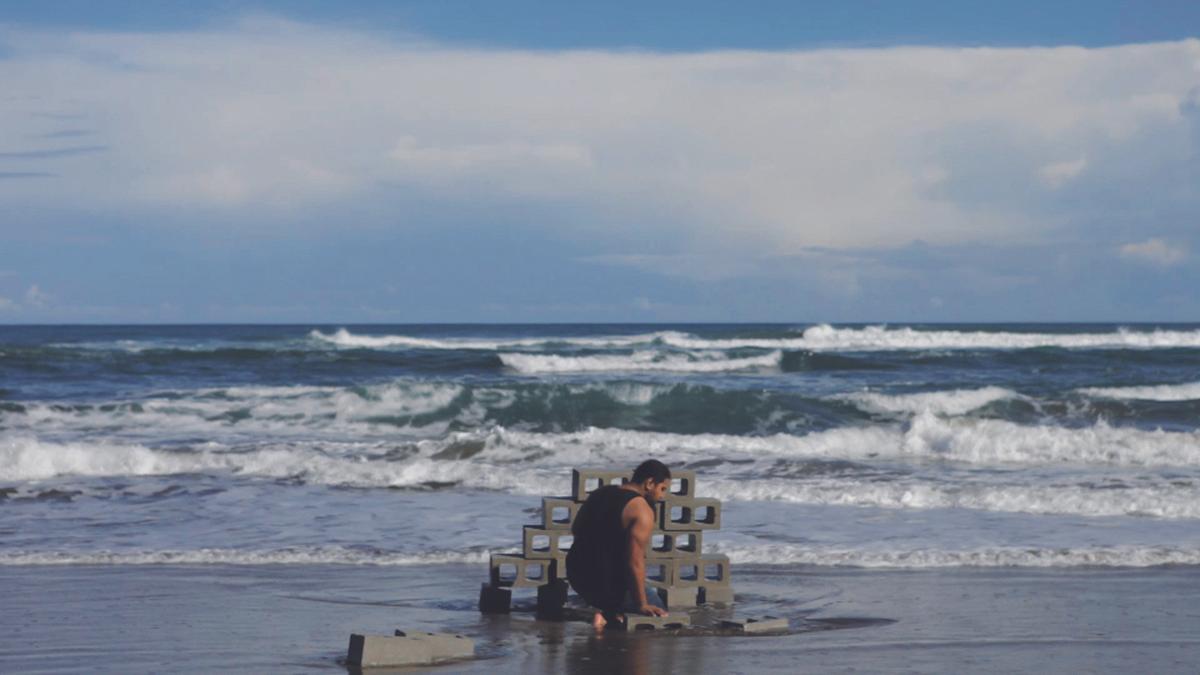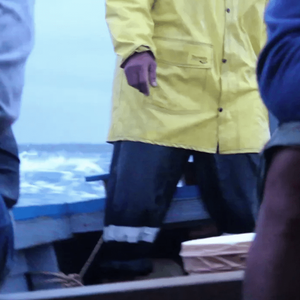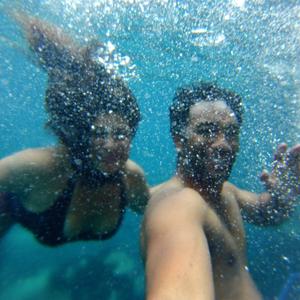There are disturbances at the core of Pataka’s group exhibition, Tonga ‘i Onopooni: Tongan Contemporary. Interesting contradictions. Rumblings. It is a group show that frustrates its groupings and theme. The art forces the text that seeks to describe it to splinter in intriguing ways. I like that the writing in the catalogue feels like it is running to catch up with the art—perhaps this review will do the same.
The title of the exhibition for example: Tonga ‘i Onopooni: Tongan Contemporary.
Then the description in the introductory passage of the exhibition’s catalogue: "Pataka is delighted to present Tonga ‘i Onopooni: Tonga Contemporary an exhibition of work by thirteen Tongan New Zealand artists."
Then, further on, in the biographies of the artists included: "Julian Hooper is of English, Hungarian and Tongan heritage and live and works in Auckland."
Or: "Terry Koloamatangi Klavenes is a multimedia artist and photographer of Tongan and Norwegian descent. Although he was born in Tonga, he was raised in South Auckland where he currently resides."
There is an interesting trickle down effect at play. The catch-all aspirations of the title gradually dissolve and disperse into an intersecting map of ethnicities, locales, cultural traditions, languages, political contexts, and dispersed identities. Some of the artists were born in Tonga, but now live in New Zealand. Some are described as having "Tongan descent" or "Tongan heritage." Lucy Aukafolau visited Tonga for the first time with her father only last year. Ane Tonga has the surname "Tonga"—a seemingly overt association—but she resists the expected curatorial convention of announcing where she was born, her cultural affiliation, or her ancestry; she is simply "Auckland-based" in the catalogue.
These complexities set up the productive contradiction at play at the heart of Tonga ‘i Onopooni: the exhibition is as much about being Tongan, as it is about not being Tongan. Though the title may at first appear to announce a cultural homogeneity—even if this is a displaced, New Zealand-based one—the show is a clever conversation about the impossibility of its own project. A diverse curatorial approach by Nina Kinahoi Tonga (variously selecting artists from different stages in their careers, some artists working with traditional Tongan artistic processes and materials and others not concerned with these at all) allows the idea of "Tonga" as a place, or more specifically, of "being Tongan in New Zealand," to be synchronically negotiated and undone as you move through the exhibition.
Take for example Lucy Aukafolau’s fantastic video installation Invisible Territories (2013). The three-screen video work depicts the artist’s trip back to Tonga with her father. The screens show moments from the visit, all inevitably associated with the ocean: the approach of a boat towards a small passage between two islands; cargo and people being unloaded at nighttime at a precarious wharf; figures standing in a boat, their faces cropped out of the frame, the wake unfurling behind them.
Morning O'ua (from the three channel installation Invisible Territories) (2013) Lucy Aukafolau. Courtesy of the Artist
Invisible Territories sensitively seeks to articulate this new, unknown space. It isn’t a terrestrial space. It is a watery, unstable space of movement and journeys. There are scenes of people arriving and departing, approaching destinations and moving through them. Nothing is static. As a result of the careful point-of-view shots, you are placed in the position of the artist: seeing this new place for the first time and seeking to understand it. What are depicted on screen are not romanticised images of the ocean; the ocean is not a source of inspiration or spiritual strength, but rather a practical tool for traversing and using.
John Vea’s video work Tribute to Samoa, American Samoa and Tonga (2013) similarly unpicks the expected metaphors one may associate with the sea, particularly the role it plays in the construction of Tongan (and, more broadly Pacific Island) cultural identity. A man, who I assume is the artist, builds a cinderblock wall on a beach, facing outwards towards the incoming waves. The exercise is a futile one. The relentless surf and soft sand cause the wall to tumble over, but the man persists, only to fail again and again.
In Tribute to Samoa… the ocean is again slightly dispassionately depicted. But unlike Aukafolau’s work it is less useful, and more malevolent, intent on destroying human effort. The work brought to mind the threat of climate change to the network of islands that are scattered across the Pacific. The work perhaps explores how this impending environmental catastrophe causes a disturbing shift in the cultural and social relationship Tongans have with the sea. What has been a life-giving entity loaded with spiritual associations, is now full of danger. This must have profound psychological effect on those living beside and within the ocean, and Vea’s sisyphean activity poignantly explores this contradiction.(1)
The video was projected directly onto a raised stack of cinderblocks, similar to those used by the artist in the video, and I found this frustrating. It was difficult to see any detail, and I didn’t know what the blocks as projection screen added to the work as a whole. The moving image was absorbing and conceptually intricate in its own right.
Vea Mafileo’s video installation Who Will Dowse the Kingdom? (2007) is arresting. One screen shows grainy video footage of riots in Nuku’alofa, Tonga’s capital, in 2006. Directly opposite this is another screen which scrolls through interviews of Tongans giving their opinions on the political situation on their island. The video and commentary is absorbing, but I found myself frustrated by the description on the wall panel and in the catalogue which stated that Who Will Dowse the Kingdom is part of a larger work, Digital Kava Circles, in which "a group of monitors…adopt the circular format of kava circles." I wanted to see this! I could start to see the necessary logic in the conversational and off-the-cuff documentary style Mafile’o adopts in her filming if the videos were displayed in the format of the kava circle—this would have thrown up a whole other set of interesting ideas about the structured forms and patterns of the kava ceremony and how political opinion is formed, expressed, and discussed in Tonga. I found because this alternative shape for the videos was hinted at, the work seemed unnecessarily dichotomous in its installation at Pataka.
Who will douse the kingdom? (riot excerpt) (2007) Vea Mafile'o. Courtesy of the Artist
I’ve focused on the three video works in the show partially because of the context of writing this review for CIRCUIT and partially because I always find myself drawn towards moving image works these days (is my brain being rewired by the screen?), but I also wanted to mention the large photographic works of Ane Tonga, from her ongoing series Grills. These photographs show open mouths inlaid with one or two gold teeth. This decoration is apparently popular in Tonga, and the inlays are sometimes made using melted down gold rings, or other pieces of personal jewellery.
For me, there’s something strange and unsettling in the act of wearing one’s personal and familial history on one’s teeth, and I found the gaping mouths to be simultaneously sexy, aggressive, and mute. There’s an interesting metaphor about cultural identity (which the show is ostensibly curated to explore) that I wanted to dig out here, at the end of this write up. Much discussion in this exhibition and elsewhere focuses on the relationship between the traditional and the contemporary in the art of the Pacific; some artists choose to re-work and reuse traditional materials and methods, while others steer clear of this discourse entirely. Both approaches are employed to unpick the shaky and permeable construct of nationhood or cultural identity. Tonga’s photographs feel like they have ingested this discussion—which has been played out in contemporary art particularly over the last two decades—and her subjects literally wear reused materials inside of their bodies, it has become part of their biology.

Seta (2012) Ane Tonga, photographic print. Courtesy of the Artist and Pataka
Tonga, who remains ethnically illusive in the catalogue text, shows us with Grills that cultural identity—who we are, or who we believe ourselves to be—is a continuous undoing and remaking; a consuming and expelling; a process in which the terms "traditional" and "contemporary" kind of have no useful meaning anymore. And that’s the best place to end: the place where we began, where the words still haven’t caught up with the art.


